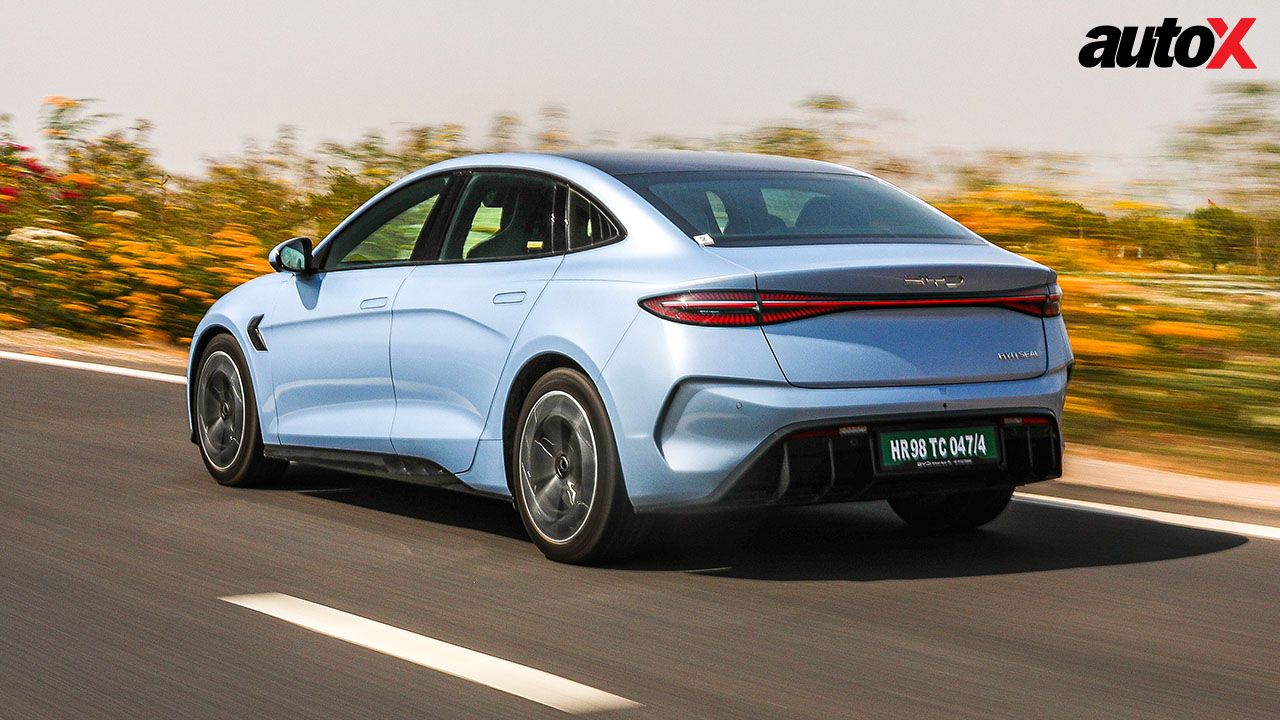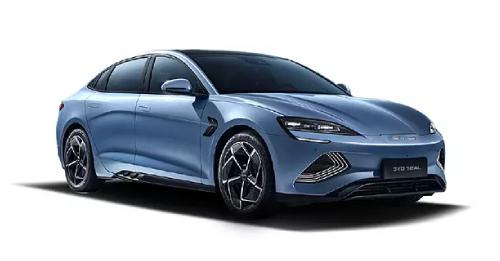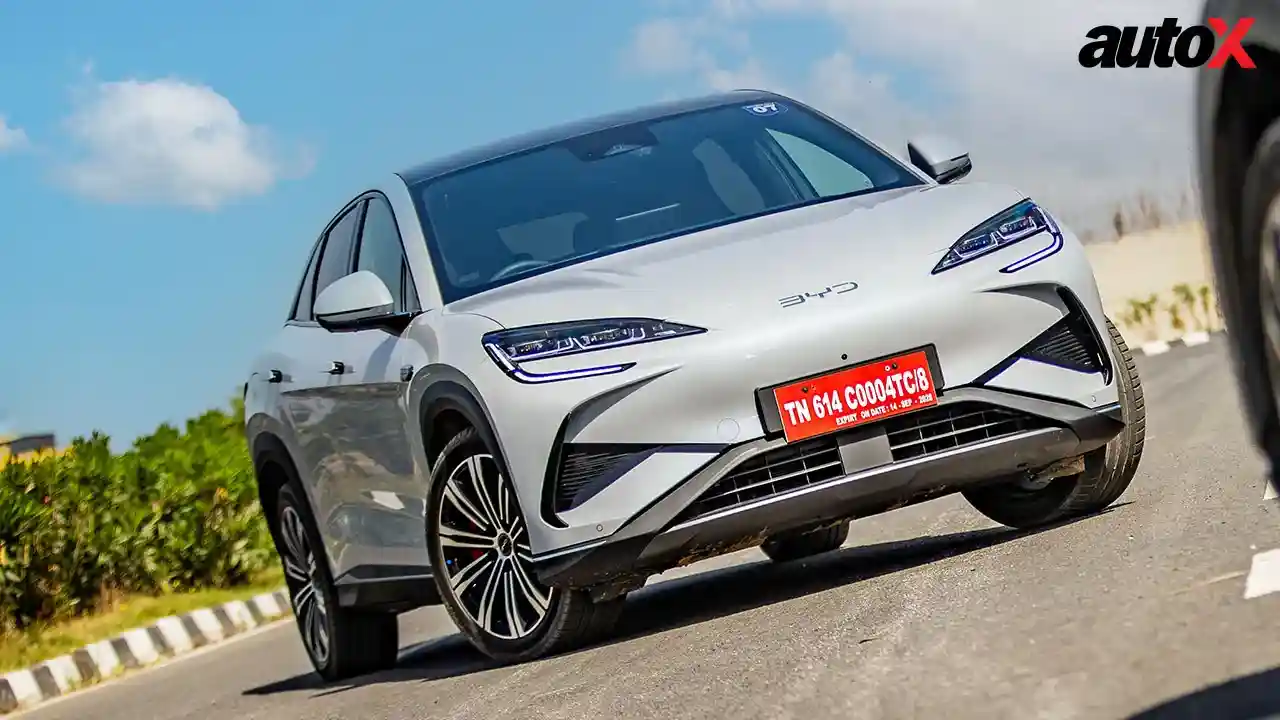BYD Seal First Drive Review: Fun, Feature-Loaded And Affordable! Too Good to be True?
The premium EV market in India is small but consists of some potent options. BYD has introduced the all-new Seal to try and take it on. At first thought, it has all the right ingredients to come out shining as best-in-class, so what's the catch here?
By Karan Mathur
Photography By Parvesh Swami
I am one of those who are of the stern belief that if you're going to try and save the world, you might as well do it in style. I stood by that when it came to the defending excellent Kia EV6 in our premium EV shootout and I say so, with the BYD Seal as well. If you're going to spend your hard earned money on a premium EV, you and your eyes deserve a treat. However, does the BYD Seal have the go to match the show? Let's dive straight in! (All puns intended, as you'll find out in just a second)
https://www.youtube.com/watch?v=ElaY9wQTYw4
BYD Seal First Drive Review: Design and Features
BYD India has designed the all-new keeping its ‘Ocean Aesthetics’ design language in mind. Which means, you get a streamlined design, a squatted body structure and large-ish wheelbase. In my opinion, the BYD Seal gives off similar styling vibes to that of a Tesla or Fisker Karma. All of it isn't just for show either, the BYD Seal gets a drag coefficient of just 0.219, which is better than that of the Tesla Model 3 and Porsche Taycan too.
The front-end styling is one of its biggest highlights, with double u-shaped LED headlights and ocean wave-inspired LED DRLs right below it, taking center stage. However, my personal favourite design element is the bonnet bulge which runs vertically across the length of the hood and looks to be inspired by a Great White Shark's nose. It will definitely look intimidating coming at you in your rear-view mirror. Step to the side and the BYD Seal's design continues to impress. You get flush door handles which pop out when you unlock the vehicle and only go back in once the door is unlocked. Next, complimenting the sleek body lines are a set of aero-efficient 19-inch, blacked-out alloy wheels too.

Even the rear-end styling of the BYD Seal complements its overall styling, with the highlight being the one-piece ‘boundless’ LED tail lights which look rather stunning, especially at night. In my opinion, the BYD Seal is definitely one of the most handsome options in the segment that it competes in. I don't have many complaints when it comes to its design but if I had to choose one, it would be the rather large amounts of BYD branding spread across the entire car. We counted a total of 16, a sign that the company really wants curious onlookers to know exactly what car it is they are looking at.
Next, if you step inside, you'll find that the interior styling is as modern and contemporary as its exterior styling. Yes, some might think that the all-black theme might be a bit dull but I find it rather sporty. Even the quality of materials which have been used is rather impressive, especially the Alcantara and soft leather combination used on the dashboard and door pads, complemented by white and blue stitching.

What will first grab your attention when you step inside is the large, 15.6-inch infotainment system. It is an android-based unit which is easy-to-use, intuitive and has crisp graphics. The party trick here, though, is the fact that it can be rotated vertically via a button on the screen or steering wheel, with all the apps integrating in vertical alignment too. The one shortcoming is that you get wireless Android Auto but wired Apple CarPlay, much to the dismay of Apple users. Other features highlights include a 10.25-inch instrument cluster, dual wireless fast-chargers, height adjustable cup holders, electric front seats, smart AC vents and a large, panoramic sunroof.
The BYD Seal is as practical as it is loaded, too. Apart from the trick height-adjustable cup holder, you get large storage spaces on the door pads, glove box, arm rest and under the centre console. Over that, the rear seating space is very generous and the large panoramic sunroof definitely lent a hand in helping it feel very spacious. Even three adults at the back is not out of the realms of possibility for inner-city journeys. Plus, with a 400-litre rear trunk space and a 50-litre frunk space, the BYD Seal will have no issue as a pragmatic option for family getaways too.
BYD Seal First Drive Review: Performance
Now, while I might have gone on for a bit too long with BYD Seal's design and features, one of its strong suites is performance it has to offer. The version we had for our review was the top-of-line AWD with the 82.56kWh battery pack but the company also has two more options for customers to choose from. The first and basic version is a rear-wheel drive, 61.44kWh version which produces 201bho and 310Nm of peak torque. BYD claims a 0 to 100km/h acceleration time of 7.5 seconds and a respectable WLTP range of 510km with this version. Next, you have the RWD version with the larger, 82.56kWh battery that benches out 308bhp and 360Nm of peak torque. It gets an acceleration time of 5.9 seconds and a claimed range of a whopping 650km. If you suffer from range anxiety and having the largest gap between charging cycles is your biggest requirement, this would be the one for you to go for. The version we had on test gets AWD capability and the same 82.56kWh battery. However, it gets a higher state of tune, producing 522bhp and 650Nm of peak torque. It gets a claimed range 580km but BYD claims a 0 to 100km/h sprint time of a whopping 3.8 seconds

Now, once you start driving, the BYD Seal definitely feels fast. Obviously, not Lotus Eletre R fast but one of the quickent in its class. It has a slight hesitation rolling off the line but is very progressive in the way it builds speed thereafter. There are three drive modes to choose from - Eco, Normal and Sport. The Sea starts off in Normal as its default setting but once you switch over to Sport, there is a marked improvement in performance. Even the throttle transitions in all modes remained comfortable and smooth, no matter going from slow to fast or, fast to slow, without the help of its single-mode brake regeneration system.
Now, the BYD Seal definitely felt fast and fun, with spirited performance being a key highlight. What was a welcome addition was smooth and gentle it felt, despite being in Sport mode. As a result, that's the drive mode I chose to be in for the entire length of test drive, given its dynamic and adaptive nature. Overall, the performance from the BYD Seal can be summed up as tractable, fun and versatile. It never hurried me along but was always ready to, gently, do anything I ask of it.
BYD Seal First Drive Review: Handling and Braking
The performance that the BYD Seal offered was good and it is definitely a hoot to hurl around. However, it is a mixed bag when it comes to handling. Starting with the steering, it feels light but a bit artificial and with a certain amount of lag time attached to it. It changes direction rather well and gives great feedback but one has to factor in the second of hesitation you and the car will have to contend with.

The suspension, too, felt pliant and comfortable. It was as at-home driving slow over bad patches of road, as it felt with three full-grown adults on Nation Expressway 4 at 120km/hour with smooth stretches of tarmac. However, it was just too soft if you try and have a bit more fun. It gets 522bhp and it is natural that you'll start to push the boundaries once you feel more comfortable with it. That's when you realize that it feels a bit pudgy on each side, and add in a kerb weight of 2.2 tones, it has all the right ingredients to not have understeer rear its ugly head into the occasion. But surprisingly it was not too bad either, I had no issue when trying to hustle around a car and that was also thanks to two key ingredients - 50:50 weight distribution and intelligent torque control. The best part? Even passengers at the back never disconnected to the driving feel, as was evident with my colleagues always getting out with a smile on their face.

The sheer weight of the car was also a factor when trying to bring the BYD Seal to a halt. Thankfully, the ventilated and drilled disc brakes with fixed type rotors did a good job in aiding deceleration. They always had a good bite, good feedback and consistency in braking whenever I started getting frisky with the Seal.
BYD Seal First Drive Review: Verdict
So, coming back to my earlier question, at hand- does the BYD Seal have the go to match the show? Well, I think it certainly does. It's fast, comfortable, feature-loaded and quite practical too. Not just inside but even the 510km range in the base versions is plenty for a week's worth of usage too. I feel it's priced well, too. It's closest rivals like the Hyundai Ioniq 5 and Kia EV6 are multiple lakh more expensive. As long as service areas become more accessible and spare parts, given the Seal's CBU format, remain easily available, I find it hard to dislike the BYD Seal as the complete premium EV package.
Motor: Dual Motor Setup
Battery: Lithium-ion, 82.56kWh
Transmission: Single Speed / All-Wheel Drive
Power: 523BHP
Torque: 670NM
Range: 580KM
Price: ₹53 Lakh (Ex-Showroom)
X-Factor: Best combo of price, performance and features among the list of mid-level premium evs.
|
Pros • Design & Features |
Cons |






